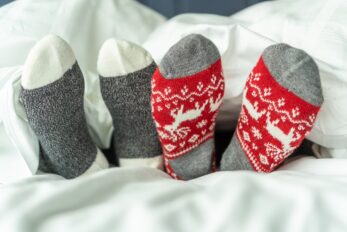May is Global Employee Health and Fitness Month, and it’s the perfect time to jump into some new, healthy practices—sleep included! With our Canadian spring in full bloom across the country and the promise of more beautiful weather just around the corner, resolve to improve your wellbeing with a month-long celebration of health and fitness—regardless of whether your workplace is at home or in the office.
The case for healthier employees
The National Association for Health and Fitness (NAHF) was created in 1979 with a mission to improve the quality of life for all through the promotion of physical fitness, sports, and healthy lifestyles. Today, they continue to promote and support quality physical education, active living, community involvement, and active-aging programs.
Whether you’re an employer or employee, there are more than a few good reasons to pay attention to Global Employee Health and Fitness Month. For starters, healthier employees are happier employees, with fitness leading to less stress and more productivity and energy. With healthier employees, organizations save money on healthcare and insurance, experience higher employee performance, and have fewer absent workers. And what do all of these employees likely have in common? A better night’s sleep, of course!
Better sleep, fewer health issues
There is overwhelming evidence that getting sufficient sleep and exercise are crucial elements in maintaining a healthy lifestyle—a lifestyle that has been deprioritized substantially over the past few decades. It is estimated that approximately one-third of adults sleep less than the recommended seven to nine hours each night and that over one-half of adults fail to meet the weekly recommended guidelines for aerobic and muscle-strengthening activity. In fact, one study found that men and women who do not exercise recreationally increased by nearly 30% each between 1988 and 2010.
As you can imagine, health risks have risen along with these numbers, and share more than a few commonalities with a lack of sleep—cardiovascular disease and related disorders in particular. On one hand, with increased sleeplessness, levels of obesity have risen as individuals have less time or energy to exercise. On the other hand, obesity can also be a contributing factor in sleeplessness, brought about by sleep apnea, insomnia, or other sleep disorders—all of which excess weight can impact.
Exercise helps you sleep better
Exercise is advocated as an effective strategy for managing a variety of conditions, including cardiovascular disease, type 2 diabetes, depression, arthritis, and disordered sleeping. While the best types and frequencies of administering exercise are still being studied, there is evidence that exercise is a means to improve sleep quality and quantity throughout your lifespan.
A 12-week study of exercise training and sleep in adolescents revealed a decrease in light, non-REM (rapid eye movement) sleep, while increasing the deep, restorative REM sleep in duration, continuity, and efficiency. A further six-week study with adults involved a twice-weekly aerobic exercise program paired with daily physical activity. Not only did participants record better sleep quality scores, but the study also added weight to the notion that exercise can be used as an effective intervention tool for poor sleep quality in adults.
There you have it! Fitness and sleep go hand-in-hand—getting enough of both are essential to living a healthier, happier lifestyle. If you’re having trouble sleeping, your willingness and ability to exercise may be impacted as a result. Book a complimentary sleep consultation and we’ll help you get back to a healthier normal as both an employee, and a human being.
We wrote this post with references to a journal on PubMed Central® as well as Global Employee Health & Fitness Month. You can read the full journal here, and find out more about GEHFM here.






